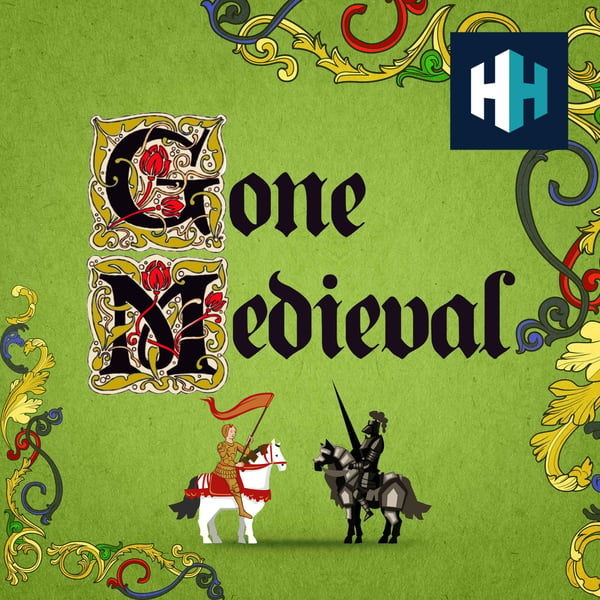Medieval Treasure: What To Do If You Find Some
Gone Medieval
History Hit
4.6 • 2.2K Ratings
🗓️ 23 November 2021
⏱️ 38 minutes
🧾️ Download transcript
Summary
If you're lucky enough to find some 'treasure', you're legally obliged to report it. A coroner then decides whether it's actually treasure. Yes, there's a legal definition of treasure, and you can't just pocket it, even if you've found it. This goes for all the amazing finds, mostly from metal detectorists over the years, including the Crusader's Sword, the Galloway Hoard, and the Ringlemere Cup. Though not everyone plays by the rules, and there have been plenty of scandals in cases like the Herefordshire Hoard, where pieces were stolen and sold to dealers.
In this episode of Gone Medieval, Dr Cat Jarman is joined by Professor Michael Lewis, Head of Portable Antiquities & Treasure at The British Museum to define what treasure is, what happens if you've found some and more about the Portable Antiquities Scheme, which gets involved when a piece might not be legally considered treasure, but still holds some cultural or historic value
Hosted on Acast. See acast.com/privacy for more information.
Transcript
Click on a timestamp to play from that location
| 0:00.0 | Have you ever wondered why one of Ruan Cathedral's towers is called the Tower of Butter, or what |
| 0:06.2 | animals have faced trials in courts for, or even how the black country got its name? |
| 0:12.4 | Well, you can find the answers to questions like these and hundreds more in our new book, |
| 0:18.4 | The History Hit Misscellanie. It's the perfect present for any history fan. |
| 0:23.3 | It's available to buy now from your favourite bookshop or by visiting historyhit.com forward slash |
| 0:30.0 | book. |
| 0:34.6 | Hello, I'm Doctor Cat German and welcome to today's episode of Gone Medieval from History Hit. |
| 0:41.0 | It seems like every week or so there's a report in the news about some great new discovery |
| 0:46.2 | often made by metal detectors, things like coin hordes, stunning and usual golden silver object. |
| 0:52.7 | We've covered a few of those here on Gone Medieval, if you go back over our episodes. |
| 0:58.0 | And one thing these discoveries often have in common is that they fall under the classification |
| 1:03.2 | of treasure, not in the sort of pirate treasure map sort of way, but in the legal definition, |
| 1:09.3 | meaning that these objects belong to the crown. If you've been following some of these stories |
| 1:13.7 | in the news, you might have noticed that's a lot of them date to the medieval period, |
| 1:18.4 | and some of them have had a really significant impact on our understanding of it. |
| 1:24.0 | But the very ideal treasure on these news articles about shiny discoveries can be problematic |
| 1:29.7 | and even controversial. You may have noticed that some of them have led to arrests, court cases |
| 1:34.4 | and even long prison sentences. And what about all those other things, the objects that are not |
| 1:40.0 | technically treasure, but that can teach us far more about the past than something shiny. |
| 1:45.4 | In today's episode, I'm going to be digging a little deeper into all of this, |
| 1:49.4 | both to find out about some of those discoveries and how the treasure process works. |
| 1:54.4 | But I also wanted to hear more about something called the portable antiquity scheme, |
... |
Please login to see the full transcript.
Disclaimer: The podcast and artwork embedded on this page are from History Hit, and are the property of its owner and not affiliated with or endorsed by Tapesearch.
Generated transcripts are the property of History Hit and are distributed freely under the Fair Use doctrine. Transcripts generated by Tapesearch are not guaranteed to be accurate.
Copyright © Tapesearch 2025.

